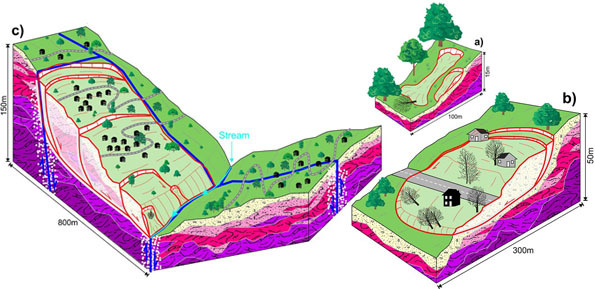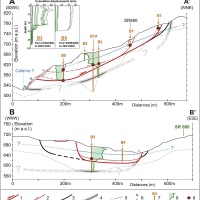Typify geo-hydrological events
(TIPIZZA)

Background
A Geo-hydrological event (EDId) (landslides, mass movements, floods, etc.) can result in a high social and economic impact, especially if it is generated by multiple simultaneous phenomena, when it is able to produce social hardships and economic damage characterized by important and lasting effects. The identification of the typical elements of the phenomena that can contribute to an EDId (typify) is essential to adequately define the risk and, therefore, to identify effective strategies for adaptation, mitigation and reduction.
Purpose
To typify the specific phenomena that can contribute to a geo-hydrological event, and the geo-hydrological events that produce high social and economic impact. Identification of synergies that amplify the effects (risk) of the geo-hydrological events. Measurement of the social and economic impact produced by events. Evaluation of global risk produced by events.
Methods
Analysis of the processes that govern the triggering, the evolution and the effects of geo-hydrological phenomena and events, with reference to the negative synergies that are determined in the case of simultaneously triggering of more types of phenomena. Integrated geotechnical monitoring and use of satellite data. Laboratory geotechnical experimentation. Modelling of slope stability conditions. Vulnerability assessment. Risk assessment. Interdisciplinary re-reading, with appropriate insights, of the results of research already carried-out.
Results
Integrated methodologies to typify high impact events. Integrated strategies of adaptation, mitigation and reduction of the risk produced by specific phenomena and by high impact events. Geotechnical models and typify shallow, medium deep and deep-seated landslides, in different geomaterials, or their elements (geometry, pore pressure regime, kinematic characteristics, representative geotechnical parameters, etc.), defined in emergency and in ordinary conditions. Evolution of the vulnerability scenario of structures and infrastructures (fragility curves, in urban areas affected by slow-moving landslides). To typify soils produced by weathering/degradation of gneiss, granites and fine-grained soils. Chain for the adaptation, mitigation and reduction of the risk produced by hydrogeological events.
Products
Papers published in international indexed journals, in conference proceedings, etc. Catalogues of geological-structural, geomorphological, hydrological, historical and geotechnical data, acquired at different territorial reference scales (regional, large area, single slope). Guidelines and best-practice codes.
Conclusions
The objective of the project (typify) will be pursued by the prosecution of the in-depth studies already started, by the elaboration, analyses and synthesis of available data and the results obtained in research projects completed, whose goals have been already achieved. With the aim to continue or start the in-depth analysis of aspects that will be particularly interesting for the project objective, if compatible with the needs and objectives of the activities foreseen in other projects, further data will be acquired.















 Internal contact person: giovanni gulla' -
Internal contact person: giovanni gulla' -